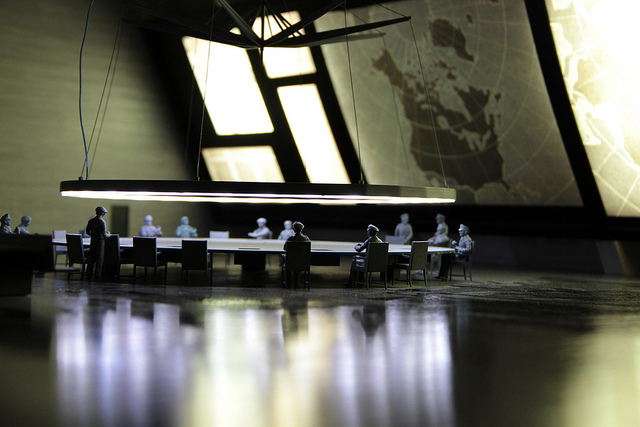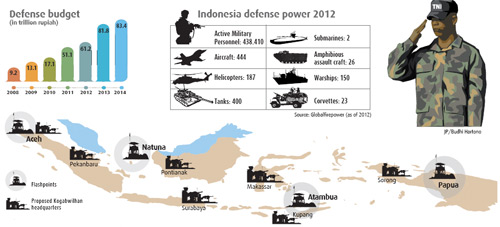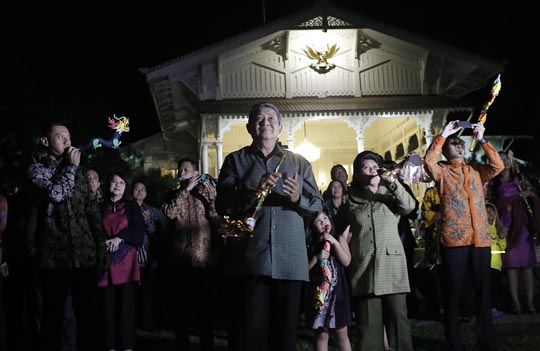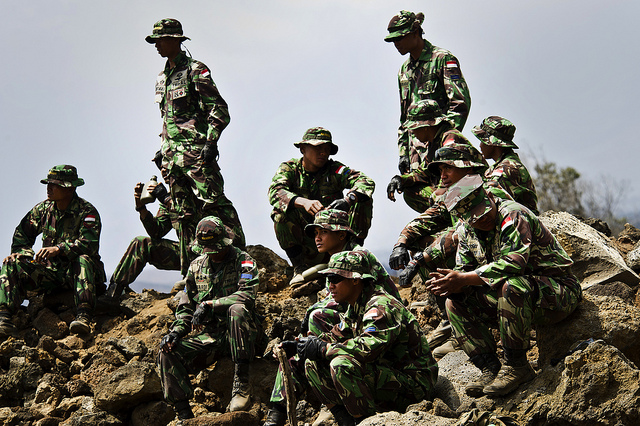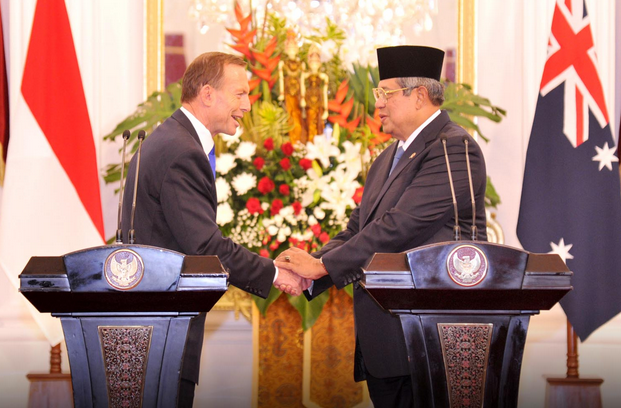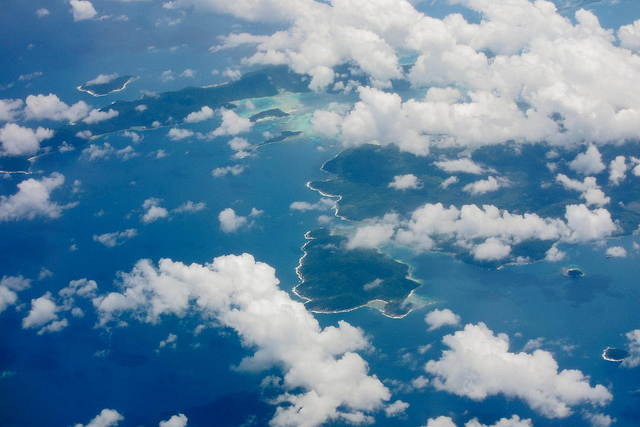
‘China’s maritime mastery of the South China Sea appears unstoppable’ proclaimed a DefenseNews article reporting on the current naval stand-off between the Philippines and China. Such thinking feeds into a growing perception among analysts that China is simply too strong, and is backing smaller Southeast Asian countries into a corner, forcing them to accept Beijing’s indefensible territorial claims in the ‘nine-dashed line’ which covers almost 90% of the entire South China Sea (SCS). Meanwhile, in the eyes of many, the US seems unwilling to confront China in conflicts over lesser strategic interests. On their part, ASEAN countries so far haven’t been able to find a joint response to China’s assertiveness which, if left unopposed, will ultimately be detrimental to regional security as a whole. That’s why in a recent blog here on The Strategist Donald Emmerson asked the pertinent question: ‘what, if anything, is anyone else prepared to do?’
Finding an answer soon is critically important for regional stability. It’s to be expected that China’s bullying behaviour in the SCS will only increase if its leaders sense a lack of resolve on the part of the US and regional powers. Apparently Beijing is working on an ‘extended coercive diplomacy’ concept which focuses on the coercion of an adversary aligned with a great power, i.e. US allies such as the Philippines and Japan. However, it’s still too early to throw in the towel. Indeed, emerging dynamics provide opportunities for Southeast Asian nations and the US to signal more effectively to China that coercive actions will have real costs. As Beijing shows its true colours in the SCS, key regional powers are increasingly forced to pursue internal and external balancing strategies against China’s maritime assertiveness.
The Philippines is understandably at the forefront of such efforts given its current naval stand-off with China. Manila just reached a preliminary agreement with the US to grant access to a number of facilities across the country to the American military. It’s also establishing a new naval base near the disputed Spratly Islands that will host US Marines. That will bring US forces right onto China’s doorstep (again). Vietnam is also taking action against China’s maritime assertiveness, having just commissioned the first of six Russian-built Varshavyanka-class submarines, an improved Kilo-class version with extended combat range to strike targets on land, sea surface and underwater. This is on top of a recent announcement that it will further intensify defence cooperation with Russia, including acquiring a third tranche of 12 new SU-30 MK2 combat aircraft. Hanoi has also laid the seeds for closer defence cooperation with the US and, just recently, strengthened strategic ties with Japan.
However, as Beijing extends its activities in the SCS further south, it’s raising alarm bells in Malaysia and Indonesia, both of which had long tried to avoid the issue of China’s rise altogether. Kuala Lumpur has become increasingly frustrated with Beijing’s growing naval and fishery activities around the James Shoal, an area claimed by both countries. In response, it announced the construction of a new naval base near the disputed waters and the creation of a marine corps. It’ll look to the US Marines for support in developing that capability. Finally, China has even pushed the envelope with Indonesia, a non-claimant state in SCS territorial disputes and is increasingly undermining Indonesia’s strategic position in South East Asia. Last week, Jakarta officially recognised that Beijing claims part of Indonesia’s Riau Islands province as its territory. As a result, Indonesia’s military has announced its intention to strengthen its presence in the Natuna Islands.
Obviously, these individual moves are far from a coordinated effort against China’s assertiveness in the SCS. But the pressure to ‘do something’ individually and collectively will only increase. Importantly, an emerging shift in US thinking on how to counter China’s ‘creeping expansionism’ in maritime Southeast Asia provides an opportunity to indirectly work more closely together. In a recent congressional testimony, Daniel Russell, US Assistant Secretary of State for East Asian and Pacific Affairs, publicly denounced China’s ‘nine-dashed line’ claims as ‘fundamentally flawed’. His remarks coincide with growing voices within the strategic community that, as part of greater ‘balancing’ (not containment) against China, the US needs to raise the costs for Chinese coercion in the SCS.
The assumption underpinning that strategy is that China typically retreats when met with convincing capability. Indeed, faced with US as well as allied/partner capability, China would have considerable difficulties seizing and holding very small and vulnerable islands in the South China Sea, as well as resupplying its troops. Of course, as Mark Thomson has pointed out, it all comes down to the political resolve of the US and regional players to stand up to China. Yet, after two major US strategic blunders over Syria and the Crimea, Washington can’t afford to up the ante in the South China Sea and not follow through. Thus, the US should start making China ‘feel uncomfortable’ in the SCS. Southeast Asian nations should do their bit to render China’s ambitions to ‘master the South China Sea’ a mere aspiration.
Benjamin Schreer is a senior analyst at ASPI. Image courtesy of Flickr user stratman2.

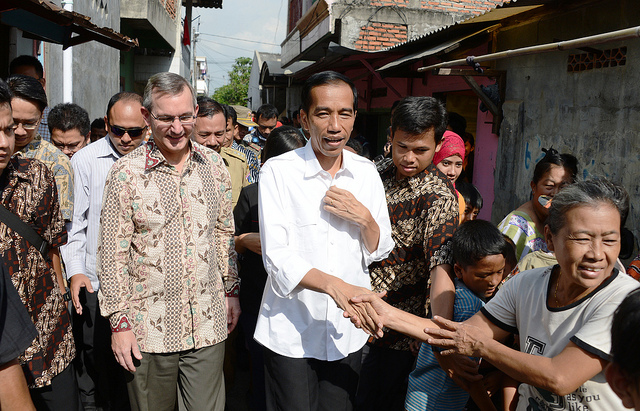


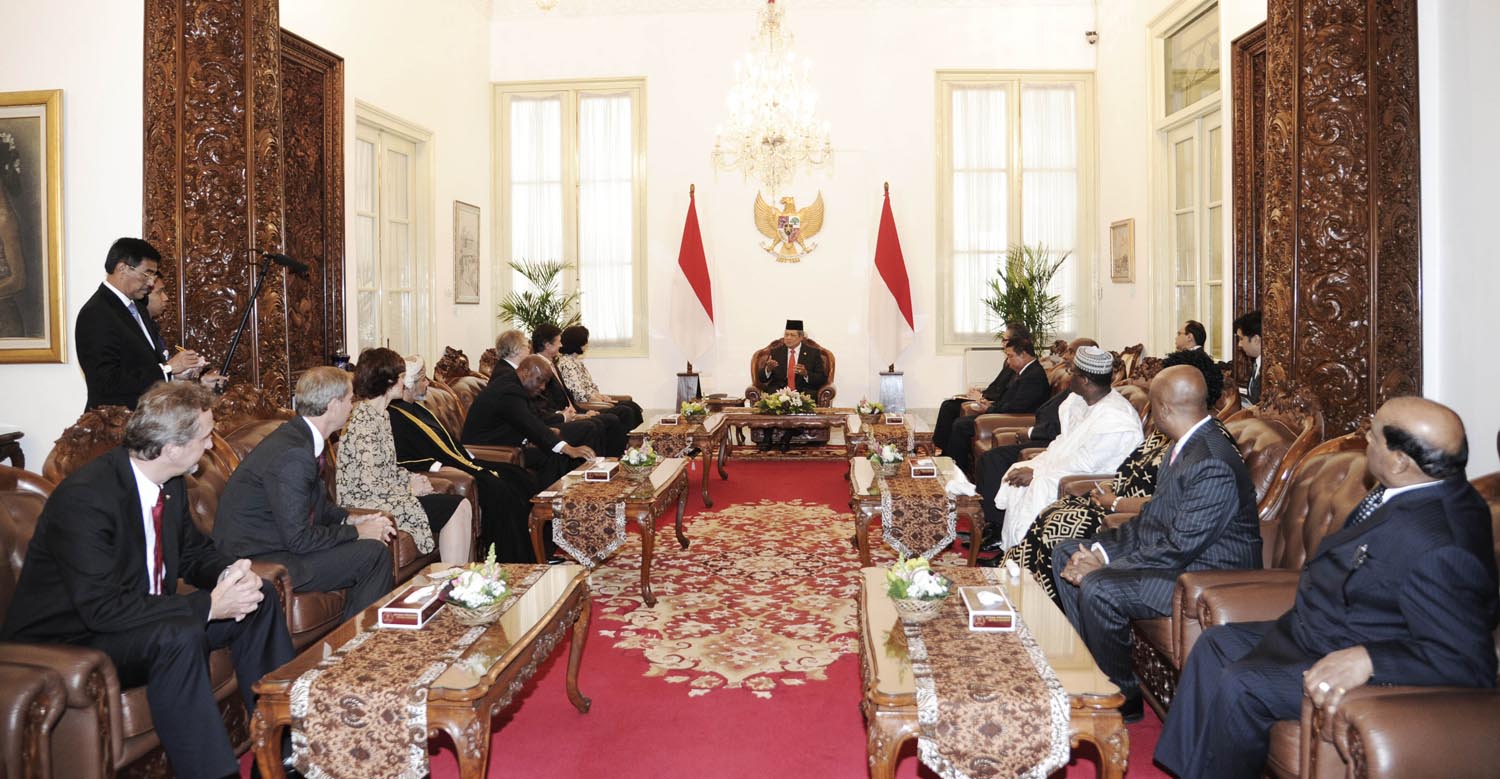
![U.S. Secretary of State John Kerry and Indonesia Foreign Minister Marty Natalegawa hold a news conference after a bilateral meeting in Jakarta, Indonesia on February 17, 2014. [State Department photo/ Public Domain] U.S. Secretary of State John Kerry and Indonesia Foreign Minister Marty Natalegawa hold a news conference after a bilateral meeting in Jakarta, Indonesia on February 17, 2014. [State Department photo/ Public Domain]](http://www.aspistrategist.org.au/wp-content/uploads/2014/02/12581889294_49c2ecc7b9_z.jpg)

